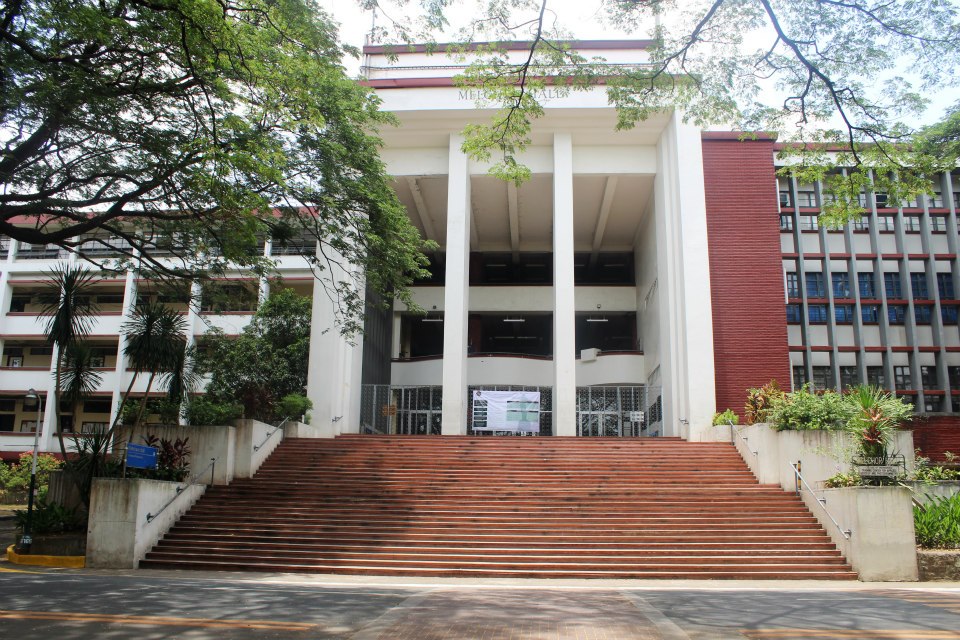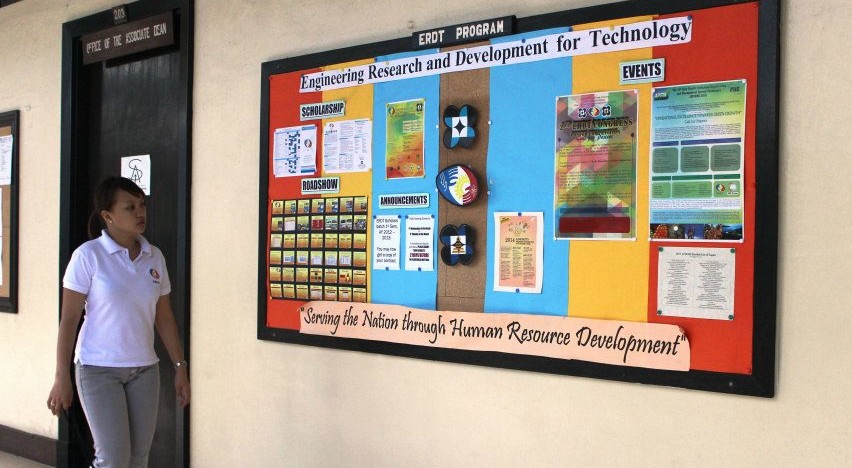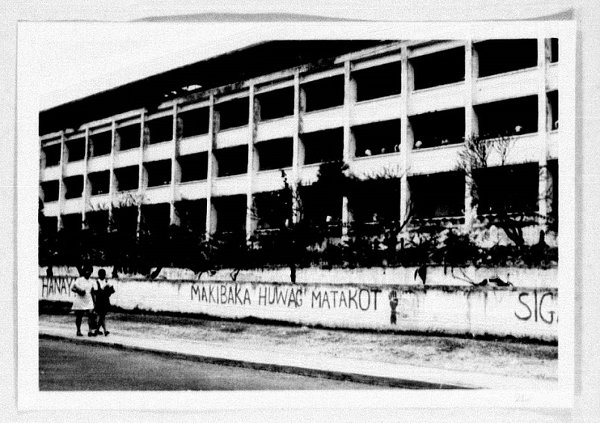By DARLENE CAY, VINCE NONATO, RALPH TY, ADRIENNE ADRE and CHARRY ESPINO
(First of two parts)

GRADUATE student Jose Castillo was one of the tens of thousands of students expecting to graduate late last month from the University of the Philippines in Diliman. After all, except for this thesis, he had completed all the requirements for his Masters of Science degree at the UP College of Engineering.
But Castillo was unable to finish his thesis—through no fault of his own. As a scholar of the government-funded Engineering Research and Development for Technology (ERDT) program, he was entitled ask UP to purchase equipment for his thesis.
No thanks to the slow procurement process, the boiler he needed was delivered mid-March and the refrigerator has only arrived, too late for the thesis, and for graduation.
Castillo’s problem was narrated by his friend, Richard de Vera, another graduate student and ERDT scholar, who now fears that the same experience might happen to him.
Castillo and De Vera (not their real names) belong to the cream of the crop, two of the 267 scholars currently enrolled in the government’s multibillion-peso ERDT program intended to build the country’s scientific and technological capability.
The scholars are spread out over a consortium of eight universities, including UP Diliman which takes up the lion’s share of scholarship slots.
But a number of ERDT scholars did not make it to UP’s graduation ceremonies for one crucial reason: It takes ages for the State University to approve and release money to buy equipment these graduate students need, causing delays in their studies.
For ERDT scholars enrolled at UP, the bane of doing research under the program is the government’s long and tedious procurement process. Half of all ERDT scholars in UP who don’t graduate on time fail to acquire needed equipment within the allotted period of study, said Dr. Aura Matias, overall ERDT program leader and current dean of the UP College of Engineering.
Unsurprisingly, the Philippines remains the region’s science and technology laggard. The ERDT itself acknowledges that for every M.S. graduate the Philippines produces, Vietnam produces six, Thailand 25 and Singapore 200.
The ERDT, established in 2007, was supposed to change that by developing a “critical mass” of scientists and engineers.
These scholars get financial incentives: free tuition and book and transportation allowances P15,000 monthly stipends, P30,000 in writing grants for their theses, plus a consumable P200,000 for purchasing necessary equipment and software.
Six years into the program, however, the ERDT consortium has yet to meet its yearly target number of masters and Ph.D. students. With its targets being adjusted every year, the program has once more failed to make the cut this year.
In its initial cycle from 2007 to 2010, the program enrolled just 354 out of the target 596 master’s scholars, and 67 out of 112 doctorate scholars.
This year, the program set a target of 260 and 55 for MS and PhD students, respectively. The accomplishment rate, unfortunately, is only 88 percent and 71 percent.
The consortium consists of four state universities—UP Diliman, UP Los Baños, Mindanao State University–Iligan Institute of Technology, Central Luzon State University. The rest are private schools—De La Salle University, Ateneo de Manila University, University of San Carlos, and Mapua Institute of Technology.
These eight universities carry out the three program components of ERDT: research and development (R&D), infrastructure, and faculty development.
More than P2 billion have been allotted for the R&D component alone, which covers the scholarship.
De Vera, for instance, is planning to build a device that could potentially fuel the growth of alternative energy—in turn, reducing the country’s dependence on expensive oil.
But De Vera is afraid that he might have a hard time procuring his needed equipment like his friend Castillo.
To use their grants to obtain equipment for their research, scholars at UP must submit line-item budgets and cost comparisons for the ERDT office to assess. The ERDT office then submits its requests to the UP Supply and Property Management Office (SPMO), which takes charge of the acquisition, utilization, and disposition of all equipment in the university.
From the technical working group that would validate the requests’ specifications up to the approval from the Office of the Chancellor, the process could take anywhere from 30 to 75 days, or roughly half a semester already. Procurement takes even longer for items exceeding P1 million.
But while ERDT officials recognize this problem, they still expect students to carry the burden and hold them accountable for their failure to finish the projects.
Dr. Arnold Elepaño, dean of the University of the Philippine Los Baños College of Engineering and Agro-Industrial Technology and ERDT project leader, said it is the students who should adjust to the slow procurement process.
“Do not put something (in your proposal that) you’re not going to deliver,” he said. “You can’t have a proposal that you don’t even know could be accomplished or not. Otherwise, your proposal is insufficient, unacceptable.”
But even former Department of Science and Technology secretary Estrella Alabastro, under whom the ERDT project was established, finds UP’s slow “bureaucratic mill” problematic.
Alabastro, who was dean of the UP College of Home Economics before she joined DOST in 1990, said she has always been vocal to UP officials about their sluggish processes.
“In fact I was very open, I was very candid to President Roman, you know, you have to do something about your system,” she said, referring to Emerlinda Roman who was UP president from 2005 to 2011.
“They’d say, ‘Here in UP, you can choose from only two paces. It’s either slow or stop,’” Alabastro remembers UP officials telling her.
Alabastro said she gets incensed whenever UP says the government is not giving them money, because it is UP that is actually very slow in utilizing the funds.
The procurement process daunts many scholars from undertaking research of their choice, and limits the program’s output. De Vera and his classmates, for instance, have had to choose easier, less equipment-intensive research projects just to be able to finish the program.
“We have a specific topic in mind, but we always think that if we pursue it, we’d go beyond the allotted two years because we’d need to procure a lot of equipment. So we just cut down and limit what we want to do,” De Vera added.
Arwin Cruz (not his real name), another ERDT scholar, said he decided to shift tracks when he applied for the master’s degree program.
“I didn’t choose to pursue my undergrad course for my Master’s because that field is very equipment-intensive),” said Arwin, who has since shifted to another degree program.
“Equipment costs around P25 million. That covers only one item. And you’d need a lot of them,” he added. For instance, refrigerators and boilers are needed in the Mechanical Engineering program, as its research thrust tends to lean toward ventilation, among others.
When former UP College of Engineering dean Rowena Guevarra, together with industrialists Paco Sandejas and Diosdado Banatao, convinced former president Gloria Macapagal Arroyo to fund their proposal for ERDT, Arroyo originally planned to assign the management of the program to the Commission on Higher Education.
But Alabastro persuaded Arroyo to allot half of the initial seed fund of P100 million to DOST.
The president, who would highlight the program in her 2008 State of the Nation Address, eventually allotted an initial P 3 billion to the project. Alabastro then asked the Department of Budget and Management to disburse all the infrastructure funds directly to UP. As if foreseeing the problems that were bound to arise, she said she did not “want to have anything to do with monitoring how slowly these structures go up.”
The ERDT infrastructure component poured funds into the UP College of Engineering, allowing each of its departments to construct its own building. Alabastro said the money had been given to UP before 2010, but most engineering buildings have yet to be completed.
Alabastro, who oversaw a similar program in the 1990s called Engineering and Science Education Program (ESEP) funded by the World Bank, said much still needs to be done to boost the country’s R&D capacity.
“It’s not money that’s tying up our hands, it’s the absorptive capacity of our institutions. Our absorptive capacity is slow—even if you pour money into our institutions, nothing happens,” Alabastro said.
In 2010, twenty years after ESEP and three years after ERDT, the Philippines remains the region’s laggard in S&T development. According to the United Nations Education, Scientific and Cultural Organization’s Science Report, the Philippines only has 81 researchers per million of the population, compared to Indonesia’s 162, Thailand’s 311, and Malaysia’s 372. Singapore, the leading R&D investor in the region, has 6,088 per million people.
In the case of the ERDT, delays hound other areas of implementation of the program.
Scholars at UP say stipends are usually delayed during the first few months of the semester and the calendar year, owing to the bookkeeping of the university’s accounting office.
“It is slow every turn of the year, for example, 2012-2013, because they say they don’t know which budget they should use yet,” Cruz said.
But while minor delays like this are manageable, in some cases they almost cost students their scholarship. A scholar cited the case of a Ph.D. student who managed to secure a P1 million grant from the government and another P1 million from Harvard University for her dissertation.
Aside from the P23,000 monthly stipend, doctorate students are entitled to the ERDT sandwich program, which allows them to do their dissertation in a university abroad.
The scholar has been developing a cardiovascular stent that would address the problems of the existing ones. However, she had to shoulder the expenses processing paper work and buying a plane ticket to the US.
“It’s really crazy. The money was only released two days before she flew out. She had to use up all her savings for her ticket,” one of the scholars said.
To avoid delays, a scholar said their department is now advising their students to come up with a line-item budget as early as the first semester of their second year in the program, to allow time for the long and tedious procurement process. He and his adviser hope to patent their ejector once it’s finished.
(To be concluded)
(The writers are University of the Philippines-Diliman Journalism students who submitted a version of this report for the Investigative Reporting or Journ 105 class of VERA Files trustee Yvonne Chua.)




